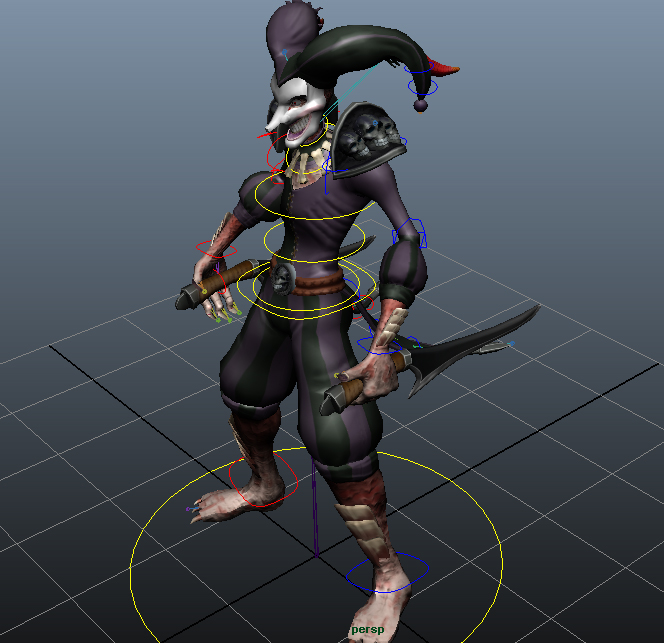Demon Shaco: Rigging (August-September 2014)
 Wednesday, September 10, 2014
Wednesday, September 10, 2014

Bret McNee courteously provided me with a model for his Shaco skin concept. It's a great concept for a character in a game I love and it inspired my next project. As an animator I believe it's a healthy practice to know the entire character pipeline, so I decided to familiarize myself with rigging in this first part of a three part journey.
Lessons Learned
1.Planning
Knowing what you want the rig to accomplish and the features it needs is vital before starting the rig. The outliner can get quite complex and realizing you forgot to add a joint or constraint when you're about to bind the skin can be a headache.
2. Double/triple check your work
Learning something new can be exciting and daunting especially when it's something a bit more on the technical side. A character rig has a ton of moving parts and it's a great idea to make sure the eggs aren't rotten before you've already mixed all of the ingredients in the bowl that is a completed character rig.
3. Pay attention to edge loops
When placing joints it's very important to pay attention to the surrounding edge loops as it will affect how friendly the mesh will be when it deforms. This is especially important when working with lower poly models as you may not have much geometry to work with.
Things that went right
1. Painting weights
I suppose it's semantics as to whether you can include this in the “rigging” process, but skinning is my favorite part of rigging. After spending hours and days getting the rig together, painting weights is a nice break for the left side of your brain. I'm sure it can be argued that rigging is an art, I certainly won't disagree, but you must make it through the learning of the technical side before you can start to get creative.
2. Custom attributes
This is pretty basic stuff, but I always find it satisfying to create custom attributes and set driven keys. Most likely because it feels like programming, someday maybe I'll take it to the next level and make a custom attribute that involves actual MEL... *gasp*.
3. Organization
As previously mentioned- with all of the joints, control curves, constraints, and geometry the outliner can get crazy busy. Keeping things properly named and grouped will help immensely when trying to navigate your scene.